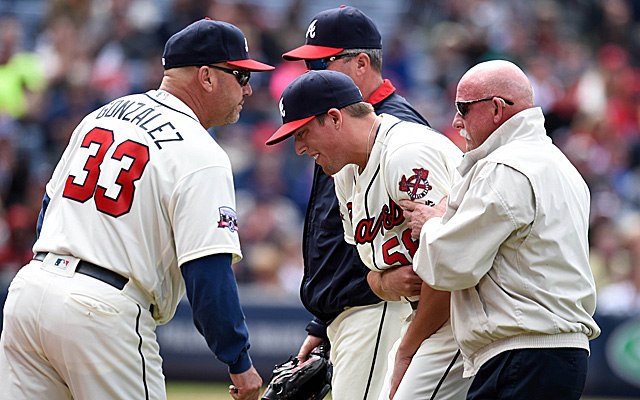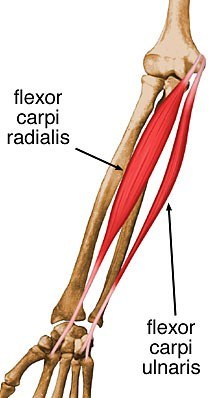Is the Coach Responsible for a Pitcher’s Arm Injury?

I’ve often said in the past that elbow injuries (specifically UCL tears) are due to microscopic fraying of the ligament due to a variety of factors – poor mechanics, improper warm-up, poor fitness, etc – that eventually cause a partial or full rupture of the ligament, thereby destabilizing the elbow and requiring either length rehabilitation or corrective surgery. While this method is widely accepted as being true, there certainly exist acute injuries to the UCL requiring surgery that have nothing to do with chronic fraying of the ligament. Some examples include:
- Falling on an outstretched arm in an unusual position that stretches or tears the ligament
- Trauma to the arm in football or another contact/combat sport
- Weight training accident that subjects the elbow to extreme valgus
- Throwing a ball from an unstable surface (this is how Josh Outman tore his ligament while pitching)
However, there is another method that can cause acute UCL tears – improper warm-up. And coaches who don’t warm-up their pitchers properly are to blame.
Activation of the Forearm is Vital
In Dynamic contributions of the flexor-pronator mass to elbow valgus stability (2004 Park, Ahmad – link), the researchers understood that “Previous studies have indicated that the demands placed on the medial ulnar collateral ligament of the elbow when it is subjected to valgus torque during throwing exceed its failure strength, which suggests the necessary dynamic contribution of muscle forces.” So the researchers sought to test how the muscles of the pronator-flexor mass helped to counter valgus torque, eventually concluding that:
The flexor-pronator mass dynamically stabilizes the elbow against valgus torque. The flexor carpi ulnaris is the primary stabilizer, and the flexor digitorum superficialis is a secondary stabilizer. The pronator teres provides the least dynamic stability.
In fact, the FCU and the FDS provide up to 24% of the dynamic stability of the joint alone!
Houston, We Have a Problem
So what does this have to do with coaches and warm-ups? The flexor carpi ulnaris (FCU) and flexor digitorum superficialis (FDS), alongside all the other muscles of the pronator-flexor mass that support the elbow, all need to be:
- Strong and durable
- Properly activated prior to competitive pitching
Every good training program for throwing should address pronator-flexor mass strength and durability through a variety of exercises and movements, ranging from sport-specific (wrist weights / overload training), to the weight room (deadlifts / rows / pull-ups / direct grip work), to the passive (manual therapy / Marc Pro therapy). Of course, this is strike one for most coaches, since few have a decent background in sports science. Try pulling out a copy of the highly influential research paper cited above and see if your high school coach has read it – or even knows what the pronator-flexor mass even is. At least your trainer and pitching coach can address this issue on the side, so that negative effect can be mostly countered.
However, the second part can’t be stopped by your independent pitching coach or trainer. The strength and durability of the dynamic stabilizers of the elbow (and the shoulder, but that’s another blog post) don’t work very well if they aren’t activated prior to competitive pitching. That means all pitchers need to warm-up properly, especially in the cold months of the high school baseball season – and doubly so if the athlete has a propensity for poor bloodflow in the first place! (Very common in long limbed athletes, and again, not something your average high school coach ever stops to think about.)
If the dynamic stabilizers of a joint are not properly activated, the risk of injury skyrockets, and performance usually suffers as a result.
So yes, your coach can be VERY responsible for acute injuries to your UCL, but there’s just one problem with that – he is NOT going to suffer the consequences. You are. You will be the one on the surgeon’s table legging out a 6-12 month rehabilitation program, saddled with thousands of dollars of medical debt, in no small part due to your coach simply not being up to date on the current research on arm injuries – or not executing a plan to fully prepare his athletes for competition.
You have to take your arm health into your own hands – and if that means having a meeting with the coach or escalating the issue up the chain, then so be it. No high school pitcher should have to take a stand on this issue, but if high school coaches continue to put their athletes in harm’s way (and I unfortunately see way too much of this), then it leaves the athlete and his parents without a lot of options.
We’ve published other articles that are directed towards coaching, check them out here!
Comment section
Add a Comment
You must be logged in to post a comment.

gee I don't know why everyone is needing TJ all of a sudden - Blowout Cards Forums -
[…] Is Your Coach Responsible for Your Arm Injury? – Driveline Baseball __________________ Follow me on twitter @bigtrix36 I PC Da Bears, Seahawks, Mariners, Pirates https://sportscardalbum.com/u/trixstar […]
Brady King -
Would activating the forearm through mevements like this: https://www.youtube.com/watch?v=4kVOwyokyNY ,help with pronator-flexor mass? Along with deadlift and row variations and grip specific work, for example; kettlebell, farmer walks & rice bucket work.